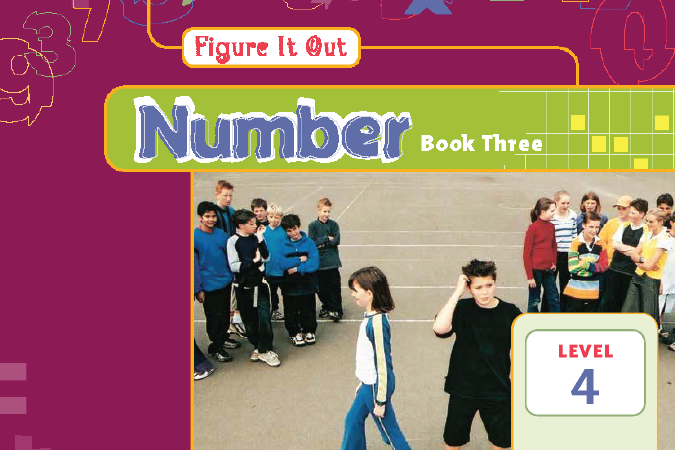Linking lollies
This is a level 3 number link activity from the Figure It Out series. It is focused on finding a fraction of a whole. A PDF of the student activity is included.

About this resource
Figure It Out is a series of 80 books published between 1999 and 2009 to support teaching and learning in New Zealand classrooms.
This resource provides the teachers' notes and answers for one activity from the Figure It Out series. A printable PDF of the student activity can be downloaded from the materials that come with this resource.
Specific learning outcomes:
- Find a fraction of a whole.
Linking lollies
Achievement objectives
NA3-1: Use a range of additive and simple multiplicative strategies with whole numbers, fractions, decimals, and percentages.
Required materials
- Figure It Out, Link, Number, Book Three, "Linking lollies", page 1
- coloured cubes (optional)
See Materials that come with this resource to download:
- Linking lollies activity (.pdf)
Activity
In this activity, the students need to recognise a pattern and then use fractions to describe the pattern.
Some students may need to use multilink cubes, counters, or diagrams to help them identify the pattern, for example, LOOOLOOOLO …, with L representing a lime lolly and O representing an orange lolly. A table such as the one below may also help.
Number of patterns |
Number of lime |
Number of orange |
Total lollies |
Diagram |
|---|---|---|---|---|
1 |
1 |
3 |
4 |
L000 |
2 |
2 |
6 |
8 |
L000L000 |
3 |
3 |
9 |
12 |
L000L000L000 |
4 |
|
|
|
|
⋮ |
|
|
|
|
By completing the first part of the table, the students should realise that the number of lime lollies is the same as the number of patterns, the number of orange lollies matches the answers to the three times table, the total number of lollies matches the four times table, and so on. Once they have made these connections, the students can consider short cuts or quicker, more efficient ways of working. You could encourage them with comments such as
- Do you need to draw a diagram for the next one, or can you figure it out?
From the table, they can see that one out of every four (that is, 1/4) of the lollies are lime and three out of every four (that is, 3/4) of the lollies are orange. Students who have trouble finding one-quarter of 36 need help seeing the connections between 36 divided by 4, 1/4 of 36, sharing 36 into four equal groups, and 4 x ?= 36.
At the end of the lesson, have the students share and discuss their methods of working. Students generally benefit from explaining their own methods and listening to other students explain theirs. You could set follow-up activities so that the students could try out the other methods. They could then discuss which is the most efficient method for them.
Other ways of extending this activity could include:
- developing more ula for the students to work out
- having the students develop an ula for their classmates to work out
- asking the students “What if …” questions,
such as:
- What if the same pattern were used for an ula twice as long: how many lollies of each flavour would you need?
- What if the ula were 100 lollies long?
- What if there were 60 lime lollies: how many orange lollies would you need?
- What if the same number of each type of lolly were used: what other patterns could you make?
a. Each set of four has one lime and three orange.
- 1/4 of 36 is 9, so she uses nine lime.
- 3/4 of 36 is 27, so she uses 27 orange.
b. Each set of five has two raspberry and three blueberry.
- 2/5 of 60 is 24, so she uses 24 raspberry.
- 3/5 of 60 is 36, so she uses 36 blueberry.
c. Each set of three has two blueberry and one orange.
- 2/3 of 24 is 16, so she uses 16 blueberry.
- 1/3 of 24 is 8, so she uses eight orange.
d. Each set of six has three lime, one raspberry, and two blueberry.
- 3/6 of 72 = 1/2 of 72, which is 36, so she uses 36 lime.
- 1/6 of 72 is 12, so she uses 12 raspberry.
- 2/6 of 72 = 1/3 of 72, which is 24, so she uses 24 blueberry.
The quality of the images on this page may vary depending on the device you are using.


